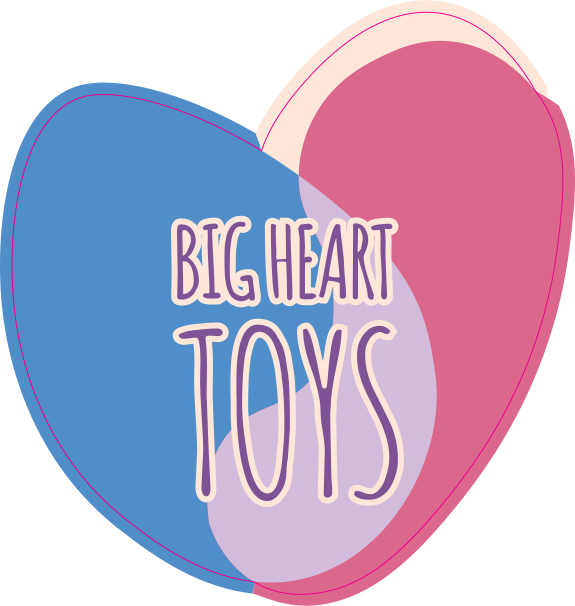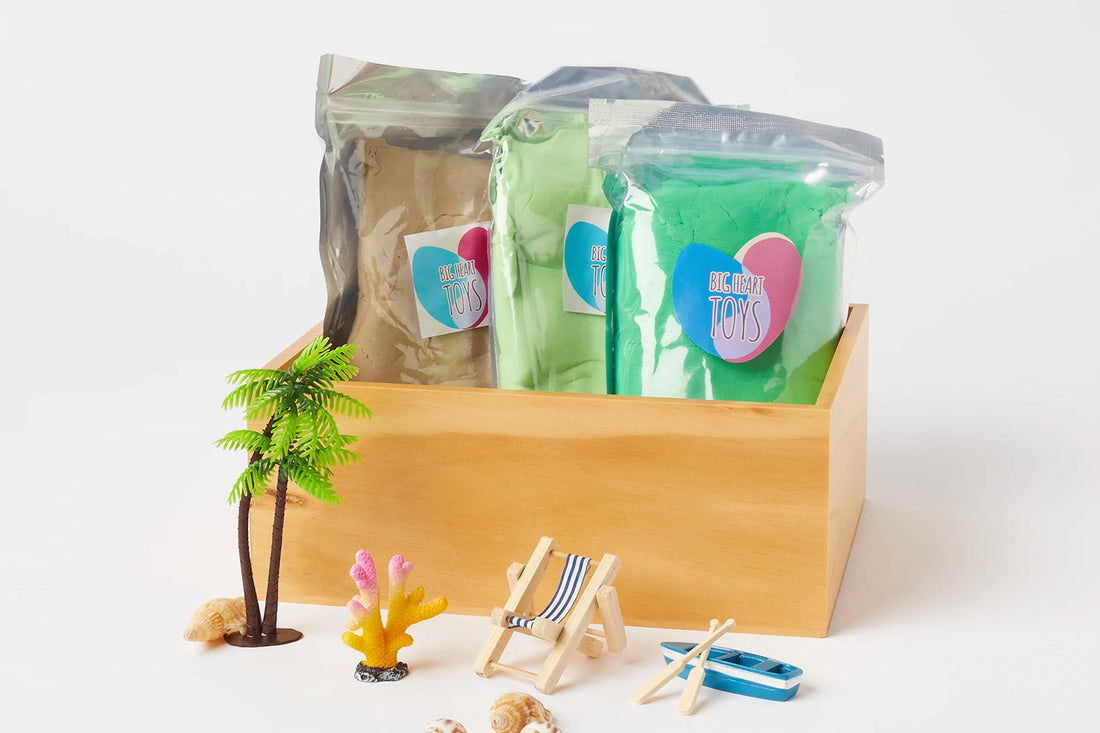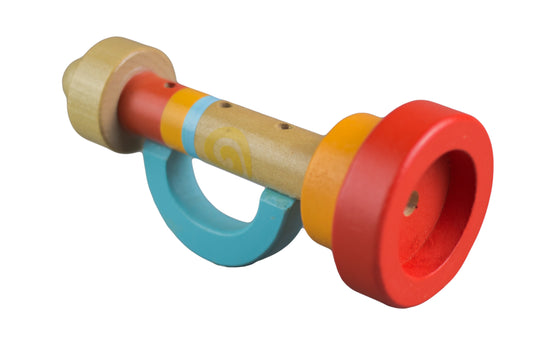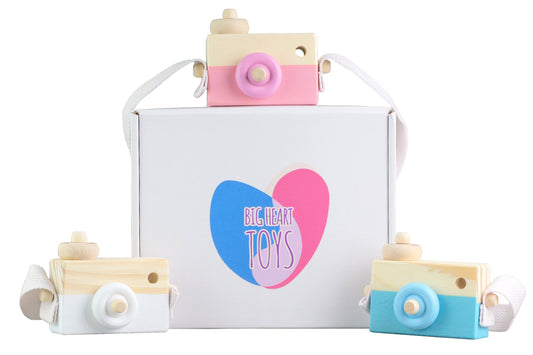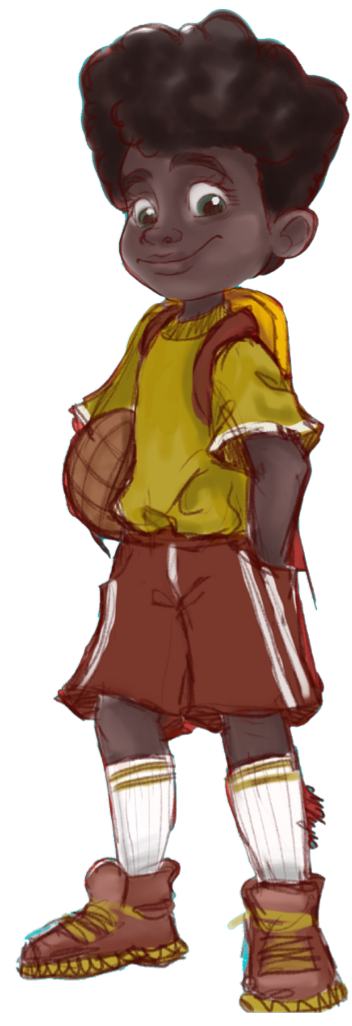Toys are part of the childhood experience. As adults, we have fond memories of our favorite teddy bear or bicycle that went with us everywhere. However, if it seems like your child and their friends have far more toys than you did — you’re likely not imagining things.
This excess of toys is seemingly everywhere — from playrooms to preschools to backyards. In fact, the average household owns 71 toys. One-fifth of these homes have more than 100 toys.
This abundance doesn’t necessarily translate into improved play hours. Here’s why: Interestingly, children cannot play with this high number of toys. In fact, most children can only keep track of 20 toys or less.
This situation inspires two very important questions: Which toys should children have? Which ones will help our children grow and adapt?
Today, we’re talking about sensory toys, specifically within the confines of anxiety. However, sensory toys have also been found to help children (and adults) with ADHD, anxiety, autism, or similar.
Research shows that sensory toys can help neurodivergent children and those dealing with anxiety. To understand why sensory toys for children help, it is important to understand sensory needs, why anxious children seek out sensory outlets, and what sensory toys are.
Childhood Anxiety: What To Know
“Anxiety” is a deceptively simple term for a remarkably complex topic. For example, one can say, “I feel anxious,” using “anxious” as a synonym for “nervous.”
In this case, feelings of anxiety are going to pass. It’s likely based on a specific situation. The nerves will go down as the situation passes (like when a roller coaster ride ends) or if the individual uses emotional regulation coping techniques.
“Anxiety” is not just a word used to describe feelings. It is also a clinical diagnosis, and anxiety disorders are varied and complex. The crux of the matter is that anxiety disorders cause anxious feelings even in what would typically be considered a calm moment. Anxiety disorders will disrupt a child’s social interactions, school, or home life.
Some types of anxiety disorders include:
- Social Anxiety
- Generalized Anxiety
- Posttraumatic Stress Disorder (PTSD)
- Separation Anxiety
- Phobias (fears like glossophobia, the fear of public speaking)
While adults can also experience these conditions, some of these might present differently in children as a result of age. As such, while many healthy coping strategies can cross over between the two age groups, some tactics will be better suited for a younger audience. That is what we’re here to talk abouttoday.
What Senses Do We Rely On?
We all can easily identify the five senses: sight, smell, taste, sound, and touch. While those five seem relatively simple, it’s actually a bit more complex. For instance, touch can tell us if a pan is too hot to be safe, but it also includes hugging, hand holding, or similarly emotionally comforting behaviors tied to brain sensations.
Another sense that isn’t discussed as much is proprioception — how our brains understand where we are. We rely on proprioception to do tasks like closing our eyes while touching our noses and other space-oriented tasks. More research is needed on this topic since it does not appear to be expressed equally by everyone; proprioception appears to be linked to a specific gene.
Essentially, our senses all work together to understand the environment around us and our needs. Sometimes, we struggle to interpret the information in ways that the neurotypical world tends to. This can lead to what is called a sensory processing disorder.
Sensory Toys: A History
Sensory toys are more popular than ever. Modern iterations include the fidget spinner or stress balls.
While they are new, sensory toys have their roots all throughout human history — some similar tools may include worry beads (used by Greek monks over 800 years ago). During the Ming Dynasty, the world saw the creation of the stress ball in Baoding balls (two metal balls rolled in one hand).
Sensory toys can help soothe the anxious mind, but they can also assist individuals who are neurodivergent, including those with sensory processing difficulties.
What Is a Sensory Processing Disorder?
A sensory process disorder is basically what it sounds like — the brain struggles to accept incoming information and process it. (In the past, sensory processing disorders were often called sensory integration dysfunctions.)
Sensory processing disorders are not currently an official medical diagnosis, but that doesn’t change that many people are affected by them daily. Sensory toys, like fidget spinners, can help children tolerate overstimulation or unpleasant senses like loud noises. Other toys, like water sensory bins, can help introduce children with sensitivities to new sensations in a positive way.
Of course, sensory processing disorders and anxiety can overlap. But today, we’re going to talk about anxiety in particular.
The Needs of Children With Anxiety
There is a lot of emotional energy bottled up inside of a child with anxiety, yet what type of anxiety and how it presents itself can be different in nearly every individual.
For example, some may be hyper-aware of the environment around them. This hyper-awareness could lock them in a fight-or-flight brain mode, making it challenging to relax. Children with social anxiety might feel rejection or mockery from their peers and attempt to avoid school.
Often, anxiety calls for the release of this pent-up energy which can result in what many might recognize as fidgeting. This could look like incessant drumming against the table, running, or not being able to stay focused on the task at hand.
The fidgeting can be channeled into other avenues such as fidget and sensory toys or breathing techniques.
What Are Sensory Toys?
Sensory toys help children reduce their anxiety and enter a calmer state. They are made with repetitive structures in mind for a repeat of the same input. Pop toys are a popular example of sensory toys, along with fidget spinners.
A pop toy is a soft, pliable plastic that can pop and un-pop again and again. They come in many sizes, bright colors, and shapes that are pleasing to young, growing minds.
Despite their long history, fidget toys are still going strong. In March of 2017, fidget spinners ranked as the number one seller among a wide variety of online toy stores. This craze was most popular with children. Parents and childhood education experts quickly realized these toys' capacity to help children.
Examples of Sensory Toys
To be a sensory toy, something must have the capacity to help a child self-soothe. Not everyone will have the same go-to toy, and some children will prefer certain toys when experiencing specific emotions. For example, a stuffed animal could comfort a child with separation anxiety, but the weighted mat helps them focus in class while surrounded by peers.
Here are just a few examples of sensory toys:
- Sensory bins
- Water table
- Sand table
- Building sets
- Soft stuffed animals
- Weighted mazes
- Sort and organize toys
- Playdough
Not all of the toys on this list are easily transported, but some, such as stuffed animals and pop toys, can be easily brought along to each activity your child is brave enough to face.
If your child has to go to school without one of these tools, make sure to let them know they will be okay. Remind them that the toy will be waiting for them after the school day or activity is completed.
How Do Sensory Toys Work for Anxiety?
When creating a toolbox for soothing anxiety, people will likely have more than one tool. These tools can include finding a quiet corner, activities like brief, vigorous exercise, or breathing practices.
Today, we’re talking about using self-soothing toys as tools:
What sensory toys come down to is essentially a grounding technique. Grounding techniques help us center our thoughts on the here and now; this is a huge part of mindfulness. Mindfulness seeks to quiet the inner turmoil that may be brewing or distract away from unpleasant surroundings (like noises or smells).
One example is mindfully eating an apple slice — focusing on the taste, smell, texture, and sounds. (This brings us back to the five senses we mentioned earlier.)
Practicing a repetitive or focused task helps your mind to focus and calm down while also expelling nervous energy. Sensory toys act as a tool to keep a child at an even level before the situation becomes more stressful.
Here’s a possible way to integrate sensory toys into calming and grounding methods. An object like a Weighted Maze serves a dual purpose. The weight is inspired by Deep Pressure Stimulation as pioneered by Dr. Temple Grandin. While the 2.2 pounds of weight is calming, individuals can press the disc through the maze, focusing the mind.
Practice and Patience
If you give the child space and energy to use these toy tools a little each day, they can cope better with stressful situations or triggering events. These tools are not meant as a cure-all but can be used in conjunction with the advice of your medical professionals.
After understanding each of the needs a child with anxiety faces, we know that sensory toys aren’t just for play but are a critical grounding technique. They also serve as outlets for those who need to release their nervous or anxious energy.
Sources:
Can Fidget Toys Help Your Child's Ability To Focus? | Health Beat
About The Senses | Twenty-One Senses
Average child gets $6,500 worth of toys in their lifetime | digitalhub US
Quick Facts: Overview of Anxiety Disorders in Children | Merck Manuals Consumer Version
The five (and more) human senses | Live Science
A Sixth Sense? It's in Your Genes | Live Science
Quit Worrying, Fidget Toys Have Been Around Forever | Atlas Obscura
Sensory Processing Disorder: Causes, Symptoms, and Treatment | WebMD
Grounding Techniques: Exercises for Anxiety, PTSD, & More | Healthline
